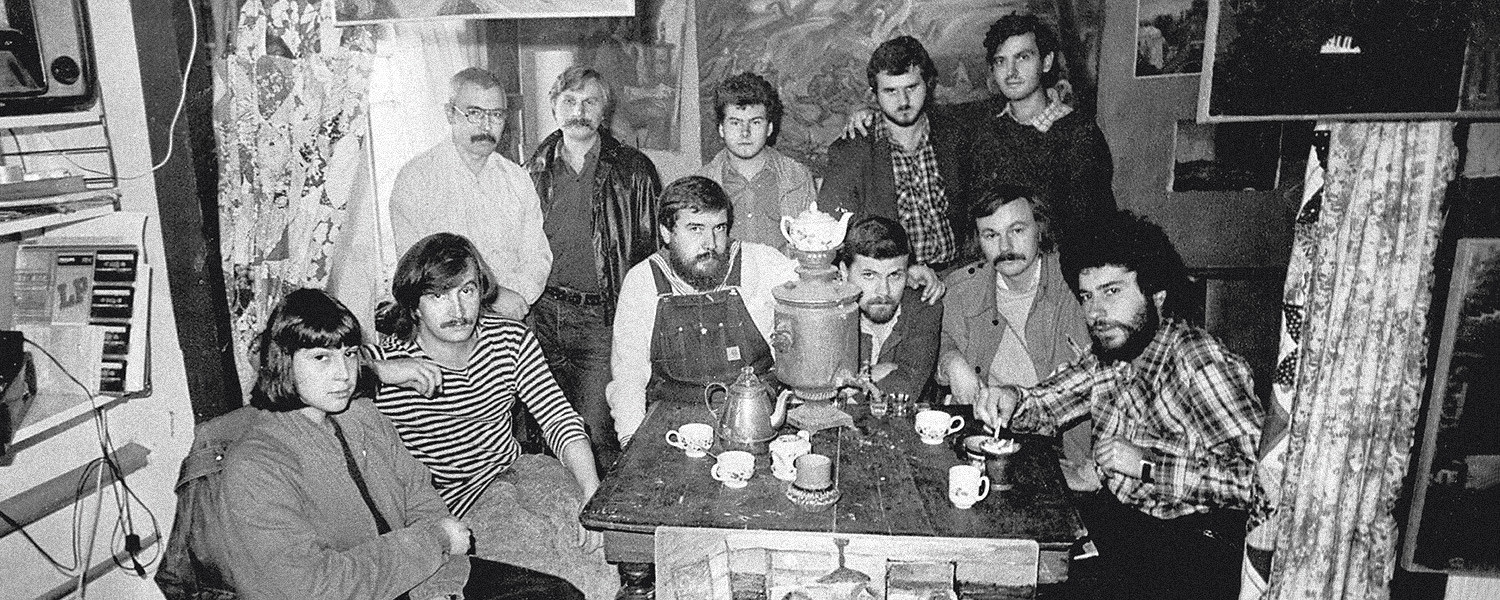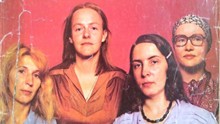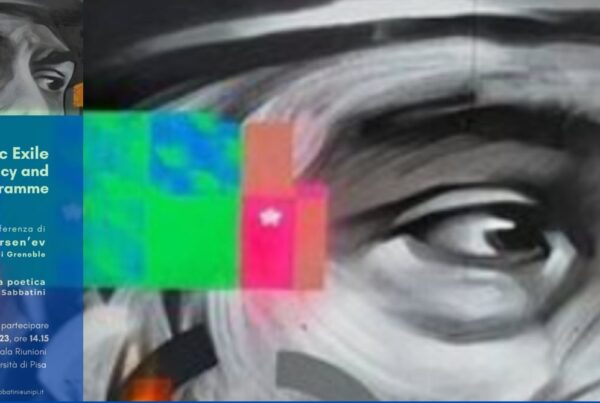
Mit’ki.
Dates: 1985-beginning of the 2000s
Place: Leningrad-Saint Petersburg
Members: Dmitrii Shagin, Vladimir Shinkarëv, Vladimir Iashke, Aleksandr Florenskii, Olga Florenskaia, Mikhail Sapego and more (listed in http://mitki.kulichki.com/russian/members/)
Publishing initiatives: periodical releases of the “Mit’ki-gazeta” magazine (1992-1998); foundation of the Mit’kilibris (1994) and the Krasnyi matros publishers (1995)
Description:
The origins of the Mit’ki group can be traced to one of the first groups of nonconformist Soviet art, the ‘Aref’evtsy’ whose influence is also evident in their name: the singular of mit’ki, mit’ëk, is the term of endearment that Vladimir Shagin, one of the members of the Aref’evtsy, used for his son Dmitrii, a leading figure of the Mit’ki. The group’s history began in 1984, when Vladimir Shinkarëv sketched his friend Dmitrii, or rather “some of his personality traits in the image of a mit’ëk” (cf. Piccolo 2004: 150-151). In the drawing, Shagin is wearing the typical tel’niashka (the blue and white horizontal striped shirt, typical of Russian sailors), that afterwards the Mit’ki wore on public occasions (cf. ibid.: 150). This picture and others like it, by artists who were already becoming well known, was widely circulated in underground circles in Leningrad and by 1985 the Mit’ki had emerged as a group which included painters influenced by the Russian-Soviet avant-garde and neo-avant-garde traditions, and also writers and poets, such as Mikhail Sapego, Shinkarëv and Shagin whose works were often autobiographical, reinforcing their own myth, and reaching out to a wider audience. Reality and imagination blend, as is often the case in the illusory and deceptive background of their hometown (cf. ibid.: 154). There is a desire to connect word and image (also found in the work of the Aref’evtsy) and an acceptance of other artistic forms such as music. In addition to interpreting Vladimir Vysotskii’s songs (cf. Sabbatini 2008: 323), the group also collaborated with various singers and musicians, including Boris Grebenshchikov and Iurii Shevchuk and worked with legends of independent poetry such as Viktor Krivulin and Konstantin Kuz’minskii (cf. ibid.: 322). The group’s embrace of alcohol and idleness about was a homage to their cultural forefathers (Kharms, Khvostenko, Tsoi, Grebenshchikov, Vysotskii) and demonstrated an attraction towards aspects of the hippie culture.
The mildly submissive but also energetic spirit of the group (cf. Caramitti 2010: 152) together with the goliardic lifestyle and zaniness of its members was combined with a real idolization of alcohol (cf. ibid.; Sabbatini 2008: 321), that in Russia is a quintessential aspect of identity, especially during the prohibitionist era inaugurated (and quickly abandoned) by Mikhail Gorbachëv. This glorification of butylka ended in the Nineties, when the excesses of previous years forced many Mit’ki to embark on a timely detox (cf. Piccolo 2004: 155). The group’s first exhibition took place in 1985 near Leningrad, in Ust-Izhora and within a few years the Mit’ki had become idols for many young people disoriented by the political and social cataclysms of the period. In the 1990s exhibitions were also organized in the United States and in Europe (in 1996 in Cagliari). In 1993 the Russian Museum organized a retrospective to mark ten years of activity (cf. ibid.: 151) and three years later the Mit’ki-VCHUTEMAS gallery opened in Saint Petersburg, a meeting place for young painters and writers as well as a venue for Alcoholics Anonymous (cf. ibid.: 157).
Federico Iocca
[30th June 2021]
Translation by Alice Bucelli
Bibliography
- Caramitti M., Letteratura russa contemporanea: la scrittura come resistenza, Laterza, Bari 2010.
- Piccolo L., I mit’ki, “Russica Romana”, XI (2004): 149-157.
- Sabbatini M., “Quel che si metteva in rima”: cultura e poesia underground a Leningrado, Collana di Europa Orientalis, Salerno 2008.
To cite this article:
Federico Iocca, Mit’ki, in Voci libere in URSS. Letteratura, pensiero, arti indipendenti in Unione Sovietica e gli echi in Occidente (1953-1991), a cura di C. Pieralli, M. Sabbatini, Firenze University Press, Firenze 2021-, <vocilibereurss.fupress.net>.
eISBN 978-88-5518-463-2
© 2021 Author(s)
Content license: CC BY 4.0





